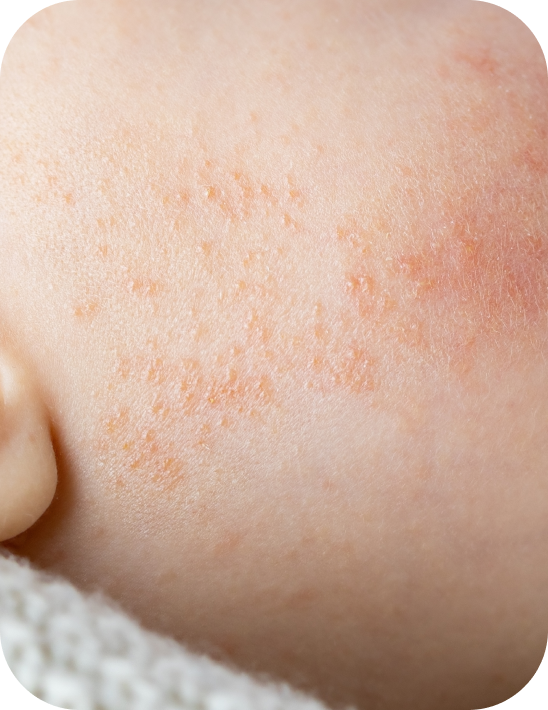Atopic dermatitis (AD), also referred to as eczema, is a highly pruritic, chronic, relapsing and inflammatory skin disorder.1 It is the most common inflammatory skin disease in children, affecting up to 20% of children worldwide.2
First manifestations of AD usually appear early in life and can be the initial step to the so-called 'atopic march' - preceding other allergic diseases such as asthma or allergic rhinitis.3
The symptoms of AD in infants include patches of skin that are red or brownish, dry, cracked, scaly or itchy skin, especially at night.3 It can appear almost anywhere on the body, however in infants, AD usually appears as tiny bumps on the cheeks.
It is typically an episodic disease of exacerbation (flares, which may occur as frequently as 2 or 3 per month) followed by remissions, but can also be continuous.4 It may have a genetic component that makes the skin susceptible to trigger factors, including irritants and allergens, which can make the eczema worse.4



